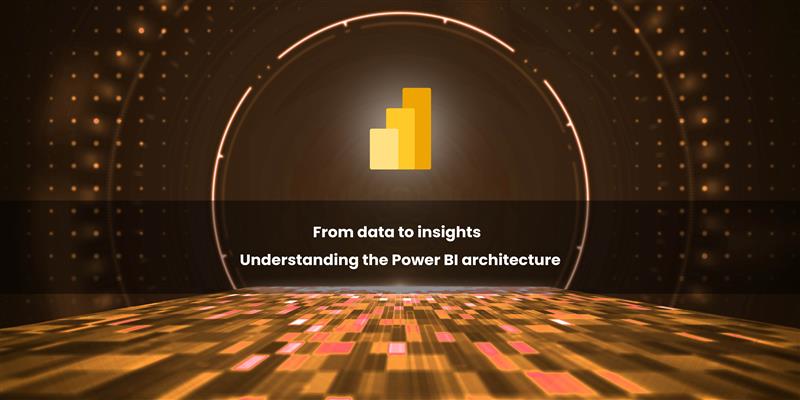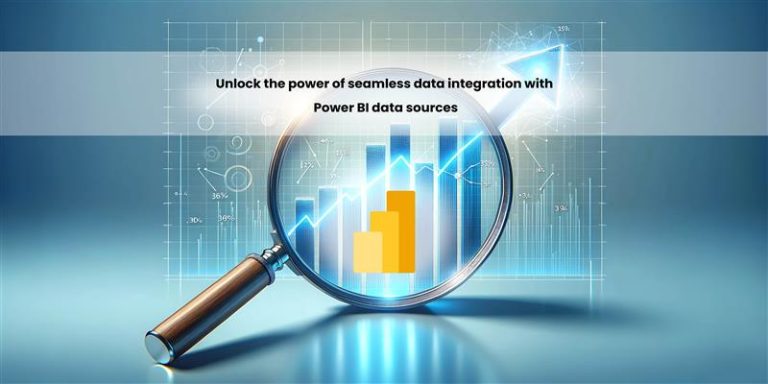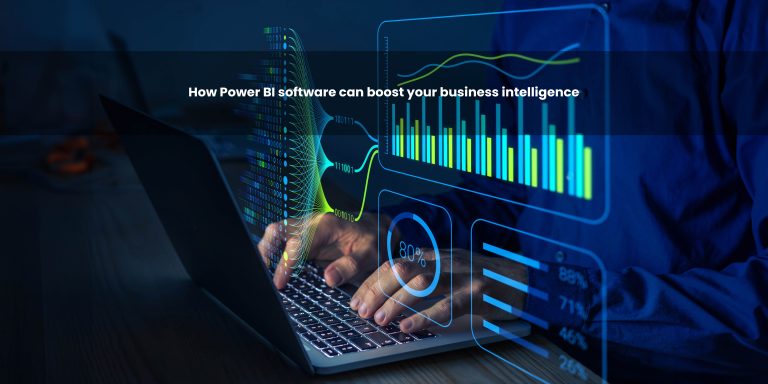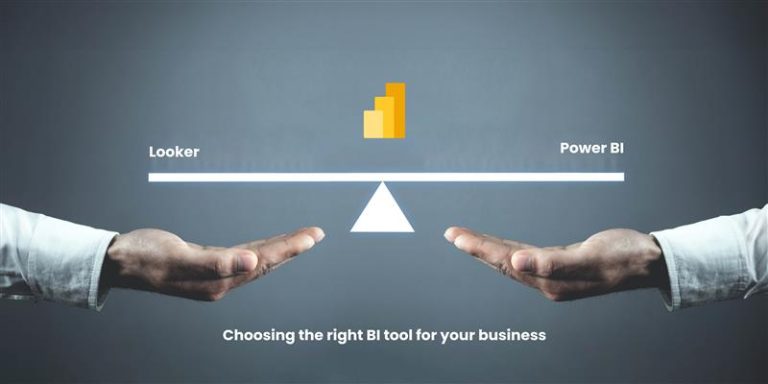Organizations are increasingly looking for more intelligent solutions to turn raw data into insightful knowledge in today’s data-driven environment. In this regard, the Power BI architecture is essential to this change, as it provides businesses with a robust platform for real-time data analysis, visualization, and sharing. Additionally, it allows organizations to seamlessly integrate data from various sources, enabling more efficient decision-making. As a
What is Power BI architecture?
At its core, Power BI architecture is designed to streamline the flow of data from multiple sources into actionable insights. It encompasses a set of components that work together seamlessly, allowing organizations to connect to data, transform it, model it and deliver interactive reports and dashboards.
Key aspects of Power BI architecture include
- Data integration – Connecting to a variety of data sources.
- Data modeling – Structuring data for efficient analysis.
- Data visualization – Presenting data in visually appealing and easy-to-understand formats.
Power BI’s architecture ensures that businesses can access their data wherever they are, with real-time reporting and easy-to-use features that enhance decision-making capabilities.
The key components
Power BI consists of several essential components, each performing a unique function within the overall ecosystem. By understanding these components, you can, in turn, maximize the benefits of Power BI for your organization. Furthermore, each component plays a crucial role in ensuring seamless integration, data analysis, and reporting. As a result, a clear understanding of how they work together will enable you to fully leverage Power BI’s capabilities and drive greater value for your business.
1. Data sources
The first step in the Power BI architecture is connecting to data. To begin with, Power BI allows seamless integration with a wide range of data sources. Moreover, it supports connections to databases, cloud-based platforms, on-premises systems, and even real-time data streams, ensuring comprehensive data accessibility.
- Cloud platforms like Microsoft Azure, Google BigQuery and AWS.
- On-premises data through SQL Server and other databases.
- Flat files such as Excel, CSV and XML.
- Online services like Salesforce, Google Analytics and SharePoint.
Power BI’s flexibility in connecting to various data sources ensures that businesses can pull data from both internal and external sources to create a comprehensive view of their operations.
2. Power BI Desktop
Power BI Desktop is where the heavy lifting happens in terms of data preparation and report creation. This free desktop application allows users to
- Connect to multiple data sources and import data.
- Transform data using Power Query Editor.
- Model data through relationships, measures and calculated columns.
- Create interactive reports with drag-and-drop features for visualizations like charts, tables and maps.
Power BI Desktop is an essential tool for building complex data models and reports that meet specific business needs.
3. Power BI service
Once reports are created in Power BI Desktop, they can be published to the Power BI Service (the cloud platform). This component enables
- Collaboration – Sharing reports with colleagues and stakeholders.
- Real-time data updates – Automatically refreshing datasets to ensure reports are always up to date.
- Accessibility – Reports and dashboards can be accessed from any device, anywhere, providing flexibility for remote teams.
- Workspaces – Organizing reports and datasets into groups for easier management.
The Power BI Service serves as the central hub for consuming, sharing and collaborating on reports.
4. Power BI mobile app
The Power BI Mobile App extends the power of Power BI to mobile devices, allowing users to access reports and dashboards on the go. With this app, teams can stay informed, even while away from their desks, making it a valuable tool for managers and decision-makers who need real-time insights.
How it works – The data flow
Power BI architecture takes raw data, transforms it into structured information and presents it in a way that drives informed decisions. Here’s how the typical data flow works in Power BI:
Data connection
The first step is connecting Power BI to your data sources. Whether it’s cloud data or on-premises databases, Power BI can seamlessly bring everything together, allowing for a unified view of your data. This integration ensures that all relevant information is accessible in one place, making it easier to analyze and derive insights. As a result, you can efficiently leverage data from multiple sources for more comprehensive reporting and decision-making.
Data transformation
Once data is imported, the Power Query Editor helps clean and reshape the data, ensuring it’s ready for analysis. In this step, data transformations such as filtering, grouping, and merging are easily applied. As a result, you can refine the data to meet your specific needs, removing any inconsistencies and structuring it for deeper insights. This process ensures that only the most relevant and accurate data is used in your reports and dashboards.
Data modeling
With clean data in place, users can create a data model. This step includes defining relationships between tables, creating calculated fields, and structuring the data for easy analysis. By organizing the data effectively, users ensure that it is optimized for generating insights. Furthermore, this structured model allows for more accurate reporting and smoother interaction between various data elements, making analysis more efficient and insightful.
Data visualization
Power BI makes data visualization incredibly simple. To begin with, users can effortlessly select from various charts, graphs, and maps to represent data in an easily digestible format. Furthermore, this step is crucial, as it is where raw numbers are transformed into meaningful insights. Additionally, these visualizations enable better communication of trends and patterns, making complex data more accessible to everyone.
Publishing and sharing
After creating the report or dashboard, it can then be published to the Power BI Service for collaboration and sharing. Once published, the report becomes readily accessible in real-time to other stakeholders across the organization, thereby promoting seamless collaboration and quick decision-making. As a result, everyone stays aligned with the latest insights, facilitating faster and more informed actions throughout the organization. Furthermore, this real-time access helps ensure that stakeholders can make timely, data-driven decisions whenever necessary.
Why choose Power BI architecture for your business?
Power BI’s architecture is designed to excel on several fronts, making it an ideal solution for businesses seeking to optimize their data strategy.
- Scalability – Power BI can grow with your business, adapting to the needs of small teams or large enterprises.
- Security – Advanced security features like row-level security ensure that sensitive data is accessible only to those who need it.
- Real-time insights – With automated data refresh and real-time dashboards, businesses can stay ahead of the curve by making decisions based on the latest data.
- User-friendly – The drag-and-drop interface makes it easy for non-technical users to create and share reports.
Power BI’s flexible architecture also ensures that businesses can scale as their data needs grow, seamlessly transitioning from basic reporting to complex analytics. Moreover, its adaptability allows organizations to customize and extend the platform, meeting evolving business requirements. This scalability ensures that companies can continue to leverage Power BI effectively, no matter how large or intricate their data becomes.
Best practices
To make the most of Power BI architecture, here are a few best practices
- Simplify data models – Minimize the number of tables and relationships to improve performance.
- Use DAX efficiently – Efficient DAX (Data Analysis Expressions) formulas improve report performance and reduce complexity.
- Implement row-level security (RLS) – RLS ensures that users see only the data relevant to them, improving data privacy.
- Schedule regular data refreshes – Set up automatic data refreshes to keep your reports up to date without manual intervention.
The future of Power BI architecture
As businesses continue to generate more data, Power BI architecture is evolving to meet these growing needs. Enhanced AI capabilities, greater integration with other Microsoft services and continued improvements in data visualization are all part of Power BI’s future roadmap.
Power BI’s future looks promising and staying up to date with these advancements will ensure that organizations can continue to harness the power of their data for decision-making.
Check out the related blogs for further reading
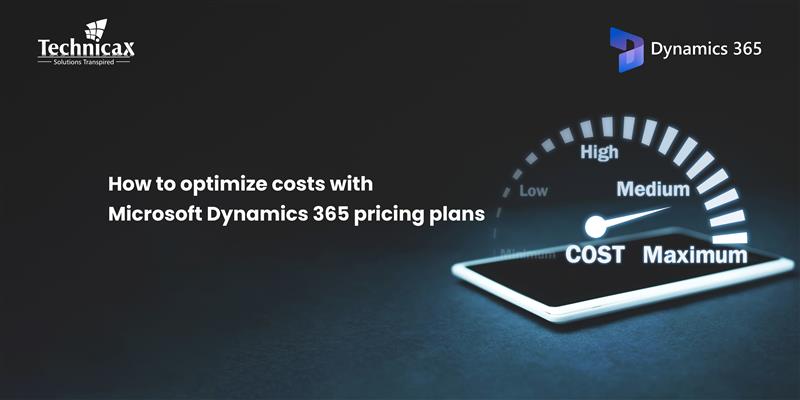
How to optimize costs with Microsoft dynamics 365 pricing plans
Microsoft Dynamics 365 pricing can be complex, but with the right approach, businesses can control costs while maximizing…

Dynamics 365 pricing and licensing – what you need to know
Microsoft Dynamics 365 is a cloud-based suite of business applications designed to help organizations manage operations efficiently. It…

Dynamics 365 Fraud protection – key features and benefits for businesses
Fraud is a growing concern for businesses, significantly impacting revenue, security, and customer trust. As digital transactions continue…

